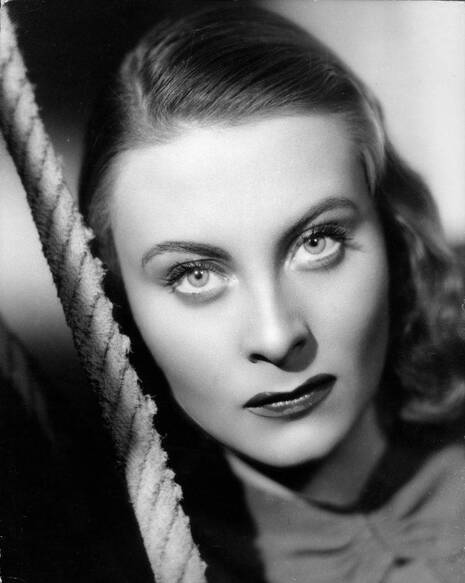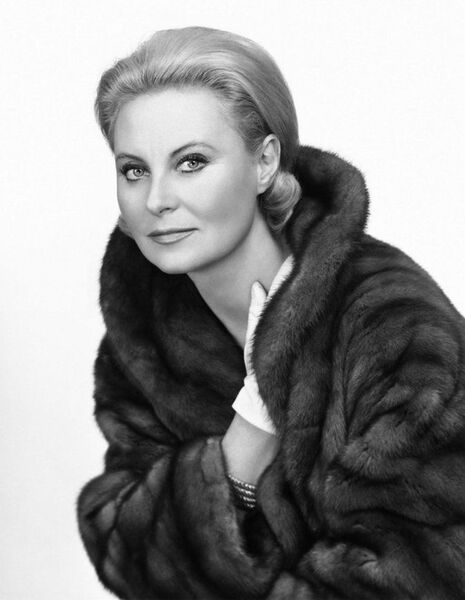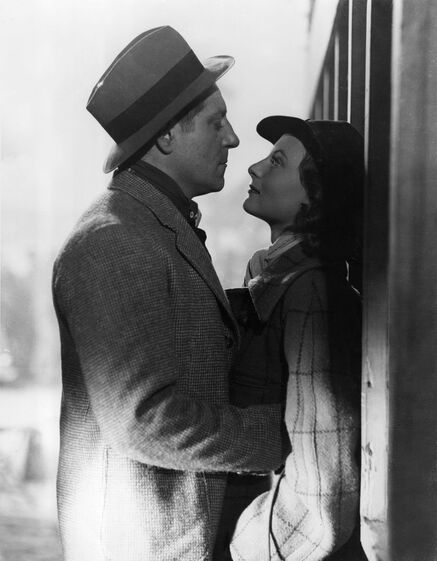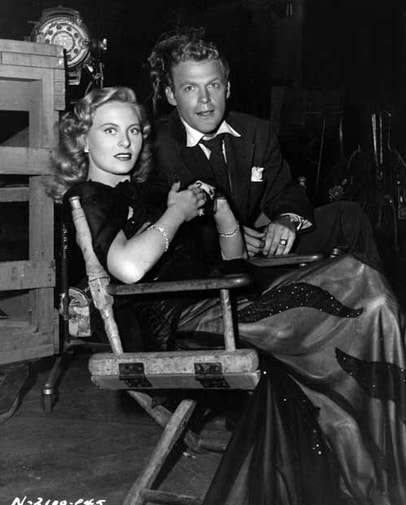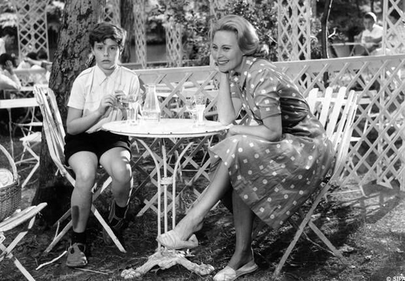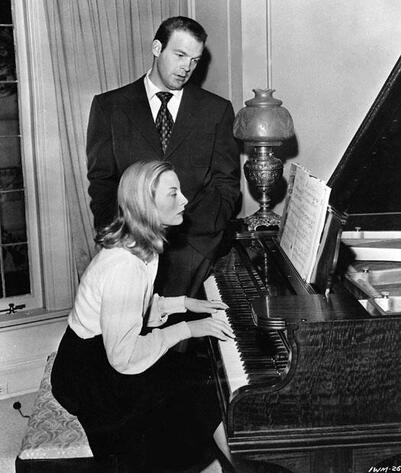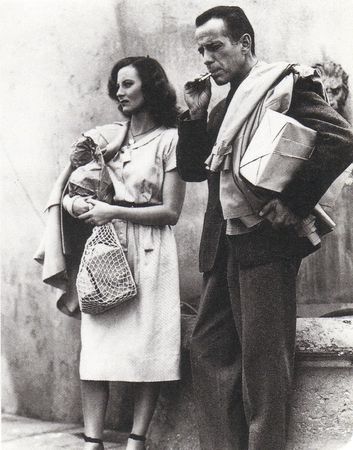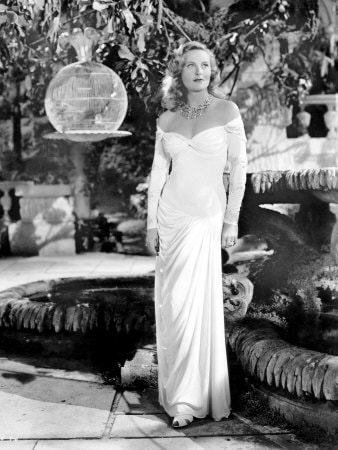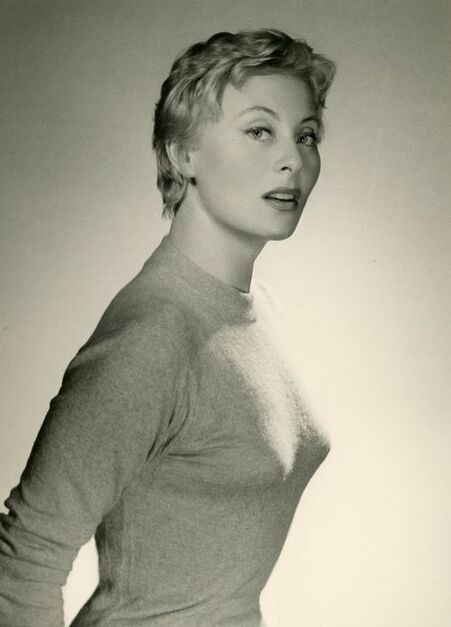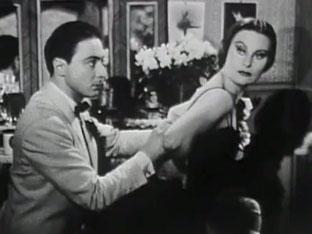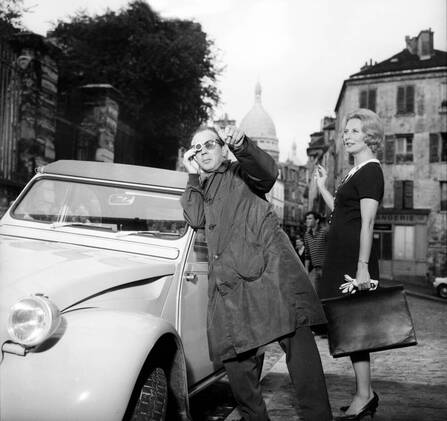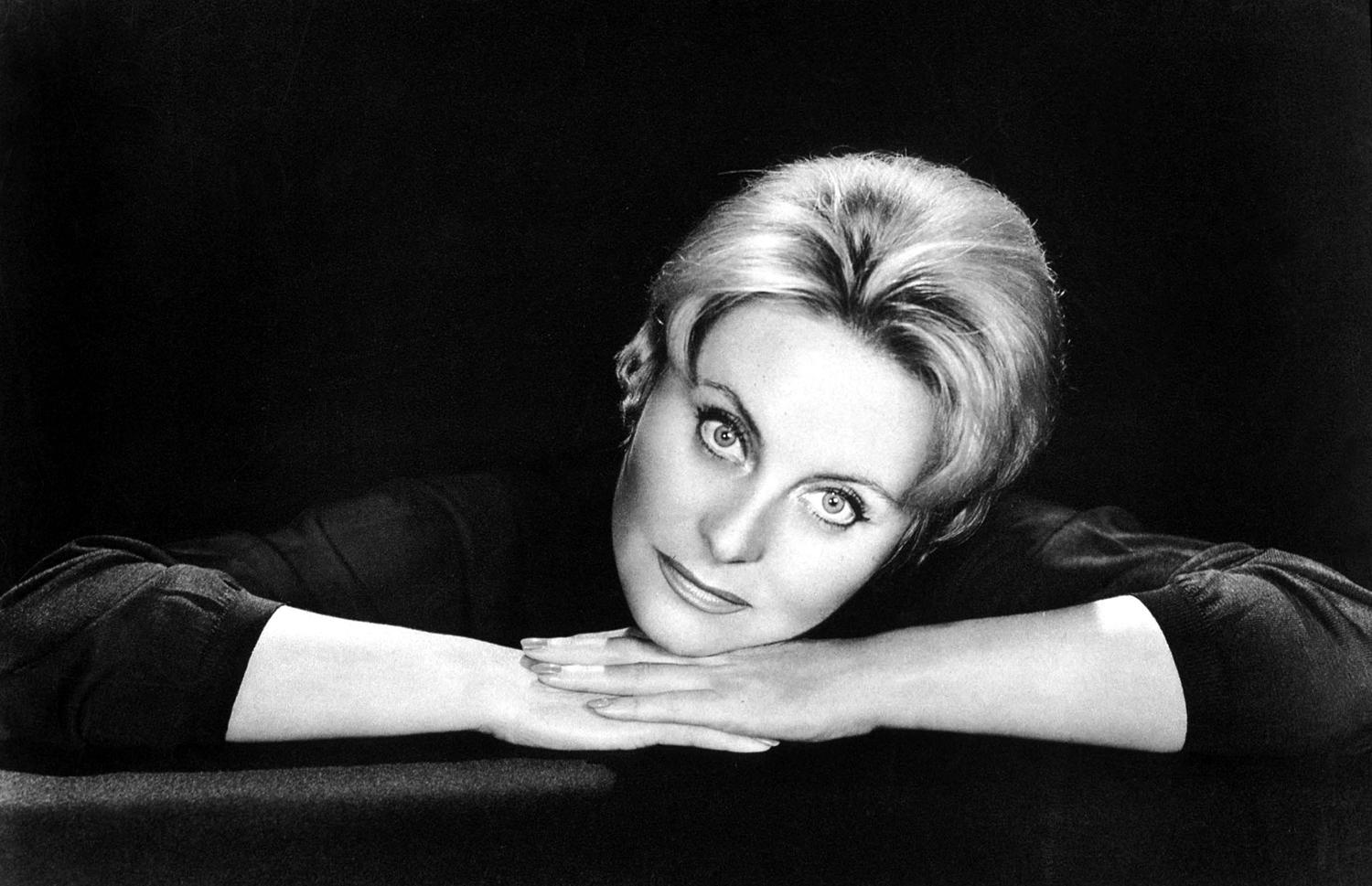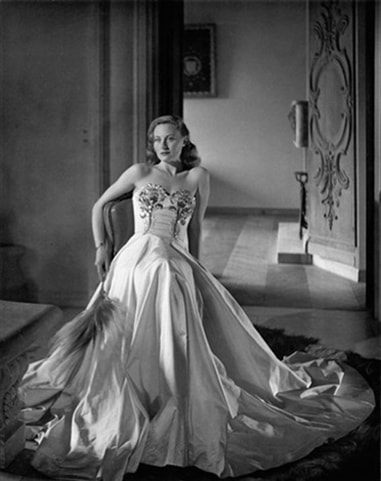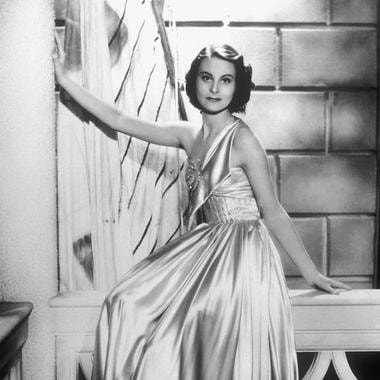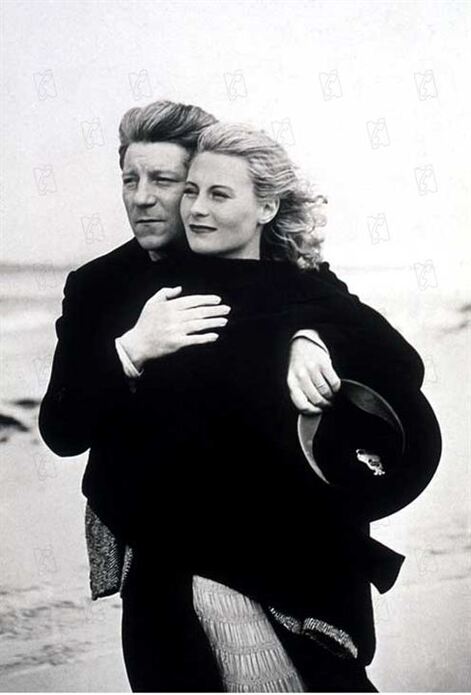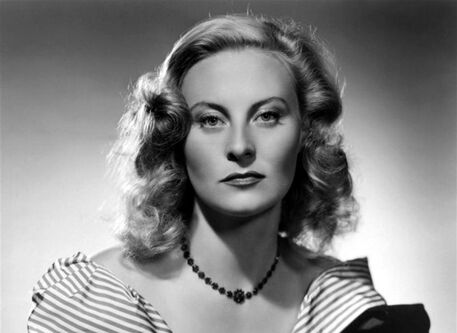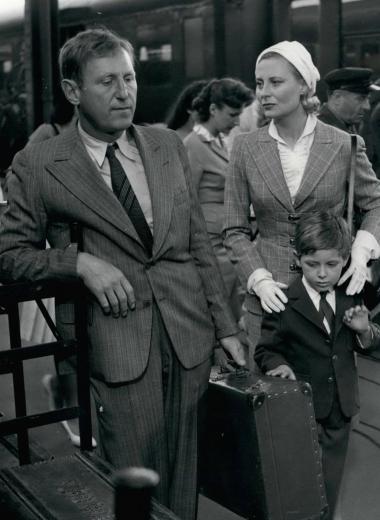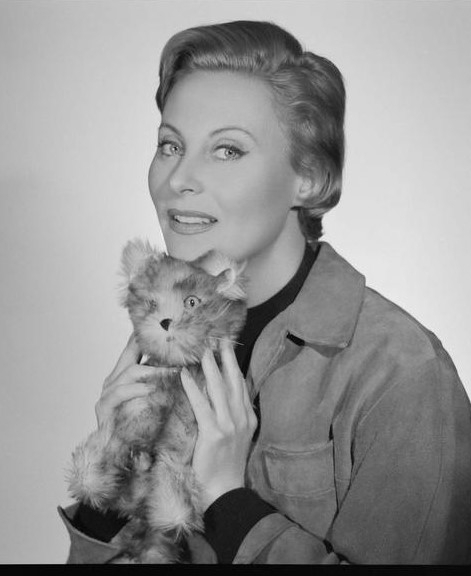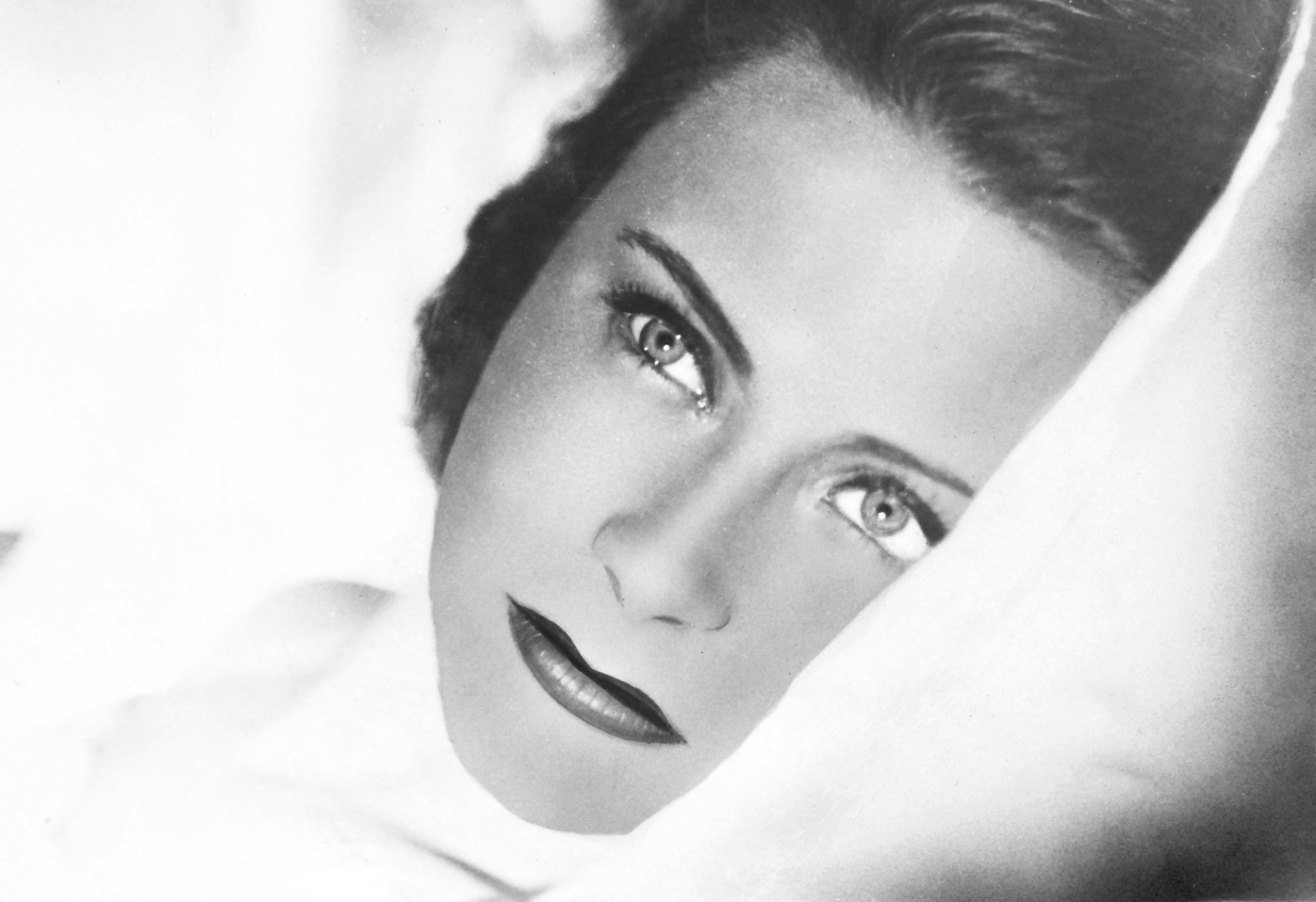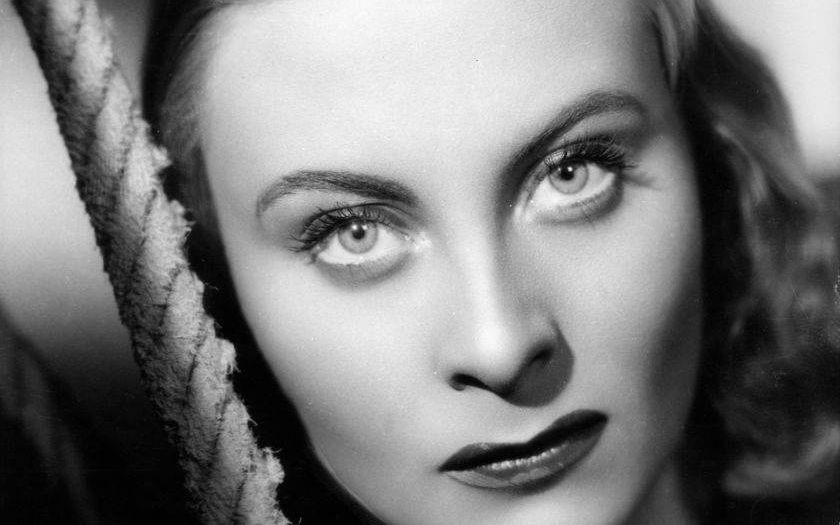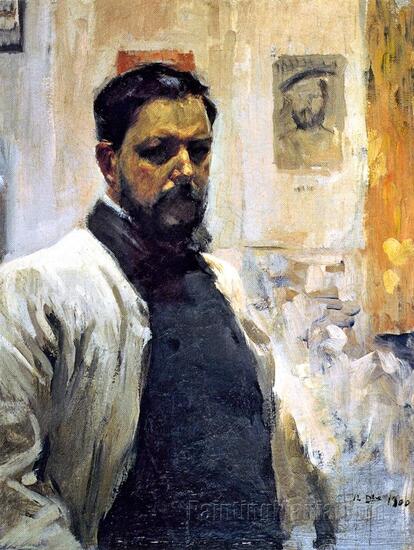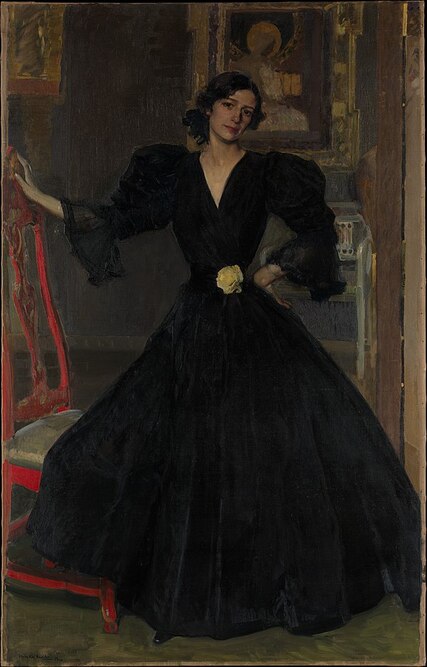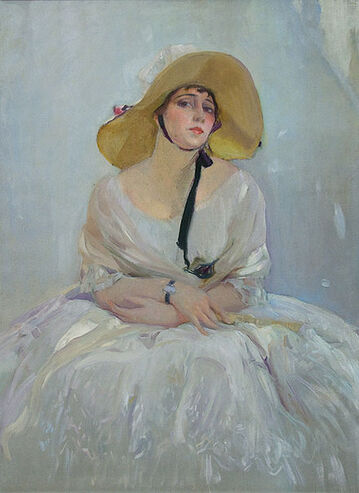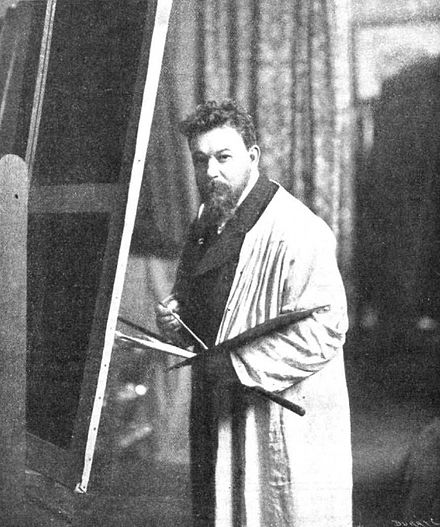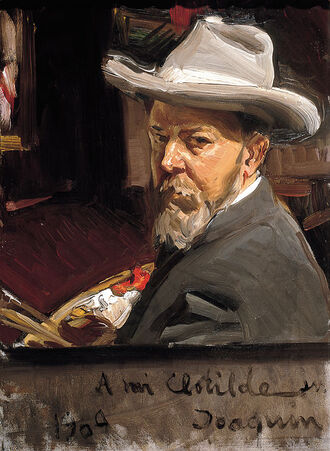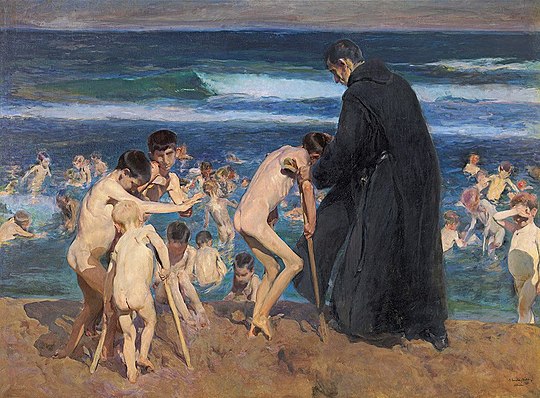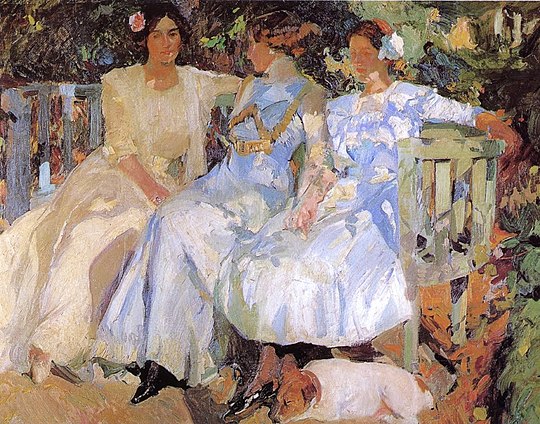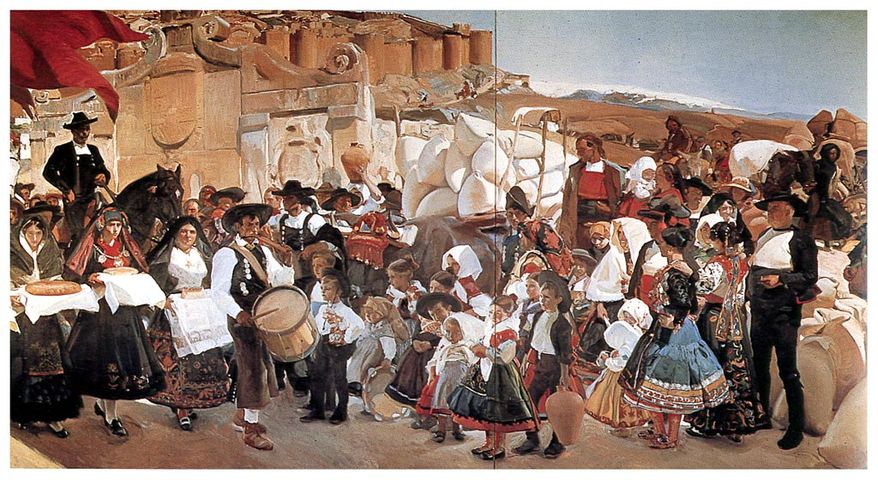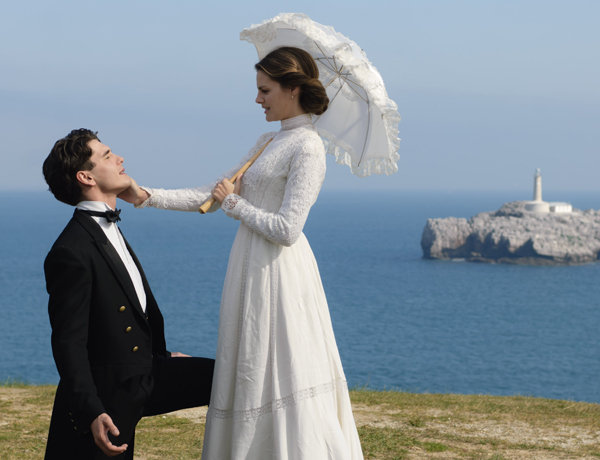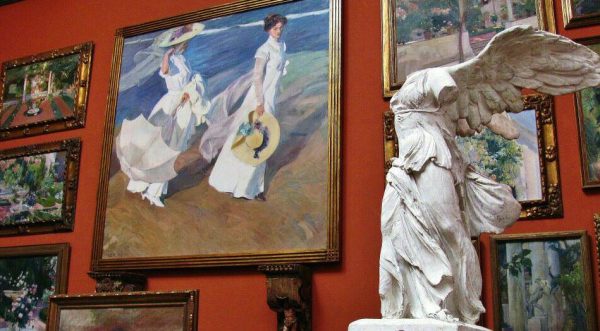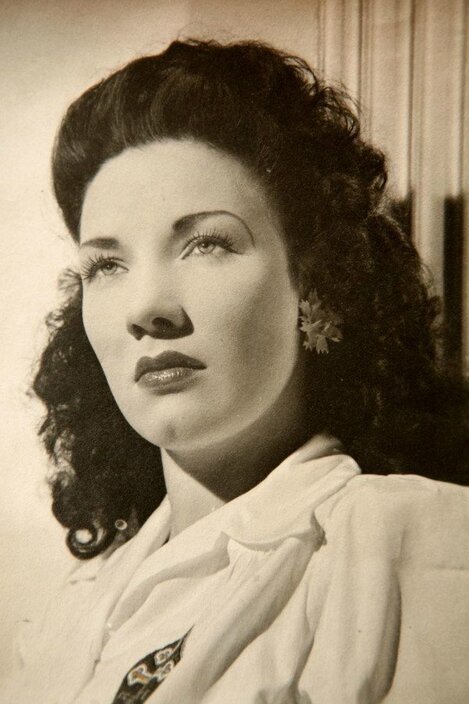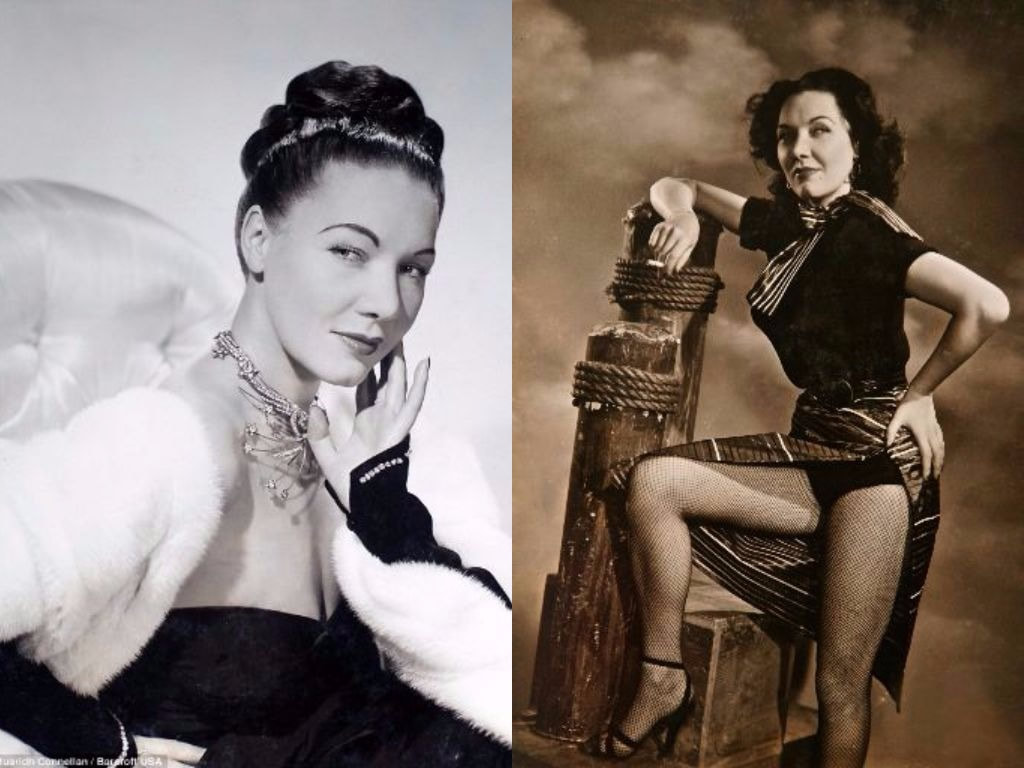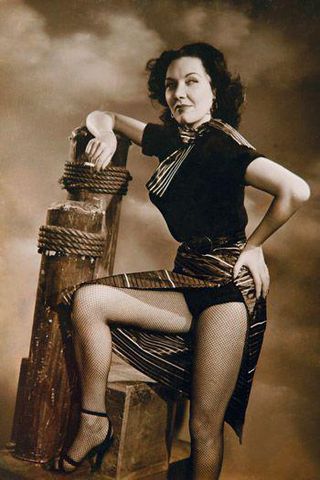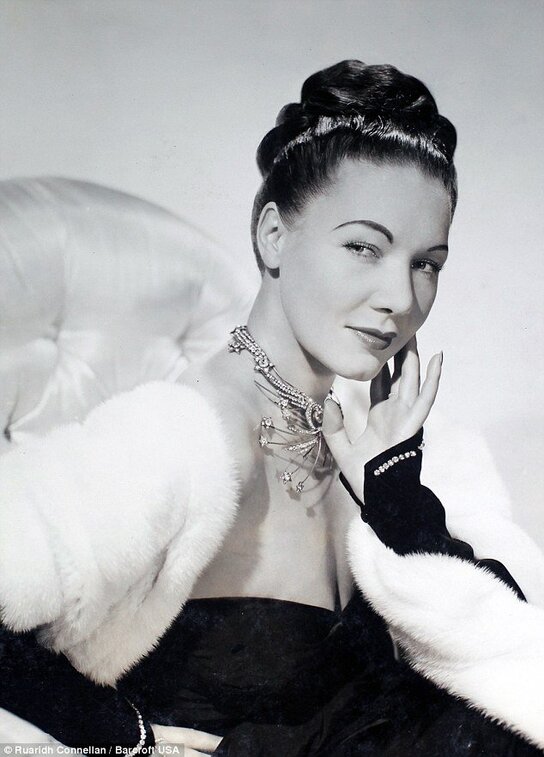ProfileMichèle Morgan (née Simone Renée Roussel; 29 February 1920 – 20 December 2016) was a French film actress, who was a leading lady for three decades in both French cinema and Hollywood features. She is considered to have been one of the great French actresses of the 20th century. Morgan was the inaugural winner of the Best Actress Award at the Cannes Film Festival. In 1992, she was given an honorary César Award for her contributions to French cinema. Simone Roussel, dite Michèle Morgan, est une actrice française née le 29 février 1920 à Neuilly-sur-Seine et morte le 20 décembre 2016 dans la même ville. Dans sa filmographie, riche de plus de soixante-dix films des années 1930 aux années 1980, figurent de grands réalisateurs français et américains de ces cinq décennies, dont Marcel Carné, Marc Allégret, Jean Grémillon, Julien Duvivier, Michael Curtiz, Carol Reed, René Clément, Claude Autant-Lara, René Clair, André Cayatte, Jean Delannoy, Henri Decoin, Henri Verneuil, Michel Deville, Claude Chabrol ou Claude Lelouch, et des partenaires tels Raimu, Jean Gabin, Charles Boyer, Humphrey Bogart, Jean Marais, Gérard Philipe, Henri Vidal, Bourvil, Michel Piccoli, Marcello Mastroianni ou Alain Delon. Dans Le Quai des brumes de Marcel Carné, son partenaire Jean Gabin lui adresse l'une des répliques les plus célèbres du cinéma français : « T'as d'beaux yeux, tu sais. ». Élue dix fois par le public « actrice française la plus populaire », elle est également la première actrice à recevoir le prix d'interprétation féminine au premier Festival de Cannes en 1946 pour son rôle de Gertrude dans le film La Symphonie pastorale (1945). Très primée à l'apogée de sa carrière dans les années 1950, elle reçoit en 1992 un César d'honneur, ainsi qu'un Lion d'or en 1996, en hommage à sa contribution au cinéma. À partir des années 1970, elle se fait plus discrète à l'écran et consacre son temps à la peinture, passion qui remonte à sa rencontre avec le peintre franco-polonais Moïse Kisling aux États-Unis en 1943, qui fit alors son portrait1. On lui doit quelque sept cents dessins et peintures.
BiographyMorgan was born Simone Renée Roussel in Neuilly-sur-Seine, Hauts-de-Seine, a wealthy suburb of Paris, but grew up in Dieppe, Seine-Maritime, Normandy after her father, a fragrance company executive lost his job due to the 1929 crisis and moved the family to Normandy. Morgan left home at the age of 15 for Paris determined to become an actress. She took acting lessons from René Simon while serving as an extra in several films to pay for her drama classes. It was then that she took the stage name "Michèle Morgan". She argued that she did not have the body type of a Simone, and "Morgan" sounded more Hollywood-friendly. Morgan was first noticed by director Marc Allégret, who offered her a major role in the film Gribouille (1937), opposite Raimu. Then came Le Quai des brumes (1938) directed by Marcel Carné (1938), opposite Jean Gabin, and Remorques (1941) directed by Jean Grémillon. Upon the invasion of France in 1940 by the Germans, Morgan left for the United States and Hollywood where she was contracted to RKO Pictures in 1941. Her career there proved rather disappointing, apart from Joan of Paris (1942) opposite Paul Henreid, and Higher and Higher (1943) opposite Frank Sinatra. In 1942, Morgan married American William Marshall (1917–1994) with whom she had a son, Mike Marshall (1944–2005). They divorced in 1948. She was strongly considered for the female lead in Casablanca but RKO would not release her for the amount of money that Warner Bros. offered, the role later went to Ingrid Bergman. Later Morgan did work for Warners however in Passage to Marseille (1944) with Humphrey Bogart. After the war, Morgan returned to France and quickly resumed her career with the film La Symphonie Pastorale (1946) directed by Jean Delannoy, which earned her the Best Actress award at the Cannes Film Festival. Her other films from this period include; Carol Reed's The Fallen Idol (1948), Fabiola (1949), The Proud and the Beautiful (1953) by Yves Allégret, Les Grandes Manœuvres (1955) by René Clair and Marie-Antoinette reine de France (1956). Morgan married French actor Henri Vidal (1919–1959) in 1950. She remained with him until his death in 1959. The next year, she married film director and actor/writer Gérard Oury until his death in 2006. She continued working in films throughout the 1960s, such as in Lost Command (1966). But started to spend more time on her passion like writing poems and painting. In the 1970s, she virtually retired from her acting career, then made only occasional appearances in film, television and theatre. In 1977 she released her memoir, titled With Those Eyes (Avec ces yeux-là). For her contribution to the motion picture industry, Morgan has a star on the Hollywood Walk of Fame at 1645 Vine Street. In 1969, the government of France awarded her the Légion d'Honneur. In 1992 she was given an Honorary César Award for her long service to the French motion picture industry. In 1996, she also received the Career Golden Lion for lifetime achievement at the Venice Film Festival. In 2009 Morgan had a solo exhibition, "Artistes En Lumière à Paris", at the Espace Cardin in Paris. Morgan died on 20 December 2016, aged 96, in Meudon, France of natural causes. Her funeral was held at the Église Saint-Pierre in Neuilly-sur-Seine on 23 December 2016, and she was buried at the Montparnasse Cemetery. BiographieSimone-Renée Roussel est l'aînée des quatre enfants de Louis Roussel, chef de service dans une maison d’exportation de parfums, et de Georgette Payot, mère au foyer. En 1933, il installe sa famille rue de la Barre à Dieppe, où il reprend le fonds de commerce d'une épicerie, mais fait faillite deux ans plus tard. La petite Simone découvre la scène à l'occasion de spectacles du casino de Dieppe. En 1935, elle décide de « monter à Paris » avec son frère cadet, Paul, et s'installe chez ses grands-parents à Neuilly. Par l'intermédiaire d'agences de casting, elle obtient son premier rôle comme figurante dans Mam'zelle Mozart. En mars 1937, la scripte Jeanne Witta recommande Michèle Morgan au réalisateur Marc Allégret qui prépare son film Gribouille. Après un essai concluant, le milliardaire suisse Max Stoffel, producteur du film, insiste pour lui confier le premier rôle féminin. Elle adopte le pseudonyme de Michèle Morgan et signe son premier contrat pour un montant de 12 500 francs. Le film est un succès. La RKO lui propose un contrat à Hollywood sur la base de 2 000 F par semaine. À la fin de 1937, elle tourne Orage avec Charles Boyer, grande vedette de l'époque. En 1938, elle tourne avec Jean Gabin dans Le Quai des brumes que réalise Marcel Carné. Son regard, d'un bleu limpide, un peu énigmatique et lointain, parfois comparé à celui de Greta Garbo, inspire à Jacques Prévert l'une des répliques les plus célèbres du cinéma dans ce film où le personnage, incarné par Jean Gabin, lui murmure : « T'as d'beaux yeux, tu sais. » . Le titre de ses mémoires, Avec ces yeux-là, publiés en 1977, y fait également référence. En 1999, son compagnon Gérard Oury, élu à l'Académie des beaux-arts l'année précédente, demande au graveur et sculpteur Pierre-Yves Trémois de graver cette même phrase sur son épée d'académicien. Le 3 septembre 1939, la guerre éclate, Jean Gabin est mobilisé à Cherbourg dans la marine nationale. Il obtient une permission exceptionnelle pour terminer le film Remorques qu'ils tournent ensemble. Alors qu'ils entretiennent une brève idylle, ils partent l'un et l'autre, séparément, pour Hollywood. Après avoir rompu avec Gabin, elle épouse aux États-Unis l'acteur William Marshall, dont elle a un fils, Mike Marshall (1944-2005). à cause de son anglais insuffisant10. En 1942, elle est auditionnée pour Soupçons et Casablanca, mais elle n'est pas retenue pour les deux. En 1944, elle reçoit en compensation celui de Passage pour Marseille avec Humphrey Bogart. À son retour en France, elle reçoit en revanche le premier prix d'interprétation féminine de l'histoire du Festival de Cannes en 1946 pour le rôle de Gertrude dans La Symphonie pastorale de Jean Delannoy. En 1948, elle divorce de William Marshall, puis épouse le 6 février 1950 l'acteur Henri Vidal. Tous deux résident dans un appartement de l'hôtel Lambert, à Paris, et tourneront plusieurs films ensemble. En 1955, elle forme un couple avec Gérard Philipe dans Les Grandes Manœuvres de René Clair. Elle est alors au sommet de sa célébrité. En 1957, elle tourne Retour de manivelle, film qui marque un tournant dans sa carrière: incarnant jusqu'ici principalement des héroïnes fragiles, elle y joue une femme fatale de série noire. Après la mort d'Henri Vidal, en 1959, elle devient la compagne du cinéaste Gérard Oury, rencontré sur le tournage du film Le Miroir à deux faces d'André Cayatte, l'année précédente. Ils resteront ensemble jusqu'au décès de Gérard Oury en 2006, mais n'auront pas d'enfants. Ignorée par les cinéastes de la Nouvelle Vague qui jugent les acteurs d'avant-guerre trop chers mais aussi trop intimidants (seul Claude Chabrol fait appel à elle en 1962 dans Landru), elle joue dans des films noirs dans les années 1960. Elle doit à Michel Deville une belle occasion de rappeler sa sensualité en interprétant une comtesse rouée dans Benjamin ou les Mémoires d'un puceau en 1967. Michèle Morgan suspend ensuite sa carrière, enregistre des poèmes et se consacre essentiellement à la peinture (gouaches, collages, huiles), dont la passion correspond à sa rencontre avec le peintre franco-polonais Moïse Kisling qui avait réalisé son portrait en 1943 à Los Angeles, et à la haute couture. Elle réapparaît épisodiquement pour la télévision, le cinéma ou le théâtre. En 1975, Claude Lelouch la fait revenir à l'écran dans Le Chat et la Souris. Elle annonce son retrait du cinéma après ce film. En 1986, elle joue dans la série Le Tiroir secret dans laquelle elle est accompagnée de son fils Mike Marshall et de sa belle-fille Tonie Marshall. En 1996, elle est la marraine du Festival de Cannes et reçoit un Lion d'or pour l'ensemble de sa carrière. En 1997, elle joue dans le téléfilm Des gens si bien élevés, dont le scénario est écrit par Danièle Thompson, fille de Gérard Oury. Après avoir été élue dix fois par le public « actrice française la plus populaire », Michèle Morgan annonce la fin de sa carrière en janvier 2001. Michèle Morgan meurt le 20 décembre 2016 dans sa demeure de Neuilly-sur-Seine: « Dans sa 97e année, les plus beaux yeux du cinéma se sont fermés définitivement ce matin, mardi 20 décembre », annonce sa famille. Après des obsèques le 23 décembre à l’église Saint-Pierre de Neuilly-sur-Seine, elle est inhumée au cimetière du Montparnasse, dans le carré juif, dans le caveau familial où se trouvent son compagnon, le cinéaste Gérard Oury. De nombreux souvenirs lui ayant appartenu ont fait l'objet d'une vente publique aux enchères, à Paris le 21 décembre 2017. Further interestArticles
0 Comments
Joaquín Sorolla Bastida (Valencia, 27 de febrero de 1863 - Cercedilla, 10 de agosto de 1923) fue un pintor español. Artista prolífico, dejó más de 2200 obras catalogadas. Su obra madura ha sido etiquetada como impresionista, postimpresionista y luminista.
Biografía
Cuando apenas contaba dos años de edad, fallecieron sus padres, víctimas de una epidemia de cólera. Al quedar huérfanos fueron acogidos, su hermana Concha y él, por su tía Isabel, hermana de su madre, y su marido, de profesión cerrajero. Pasados los años, su tío intentó enseñarle, en vano, el oficio de la cerrajería advirtiendo pronto que su verdadera vocación era la pintura.
Estudió dibujo en la Escuela de Artesanos de Valencia. Al acabar su formación comenzó a enviar sus obras a concursos provinciales y exposiciones nacionales de bellas artes, como la de Madrid en mayo de 1881, donde presentó tres marinas valencianas que pasaron inadvertidas, pues no encajaban con la pintura oficial, de temática histórica y dramática. Al año siguiente estudió la obra de Velázquez y otros autores en el Museo del Prado. Tras visitar el Museo del Prado, Sorolla pintó en 1883 el lienzo inédito Estudio de Cristo, descubierto en 2012, donde se observa la influencia del Cristo crucificado de Velázquez. Comienza así su "etapa realista", siendo su profesor Gonzalo Salvá. Con su amigo, el también pintor Pedro Gil, se desplazó a París durante el primer semestre de 1885, y conoció de cerca la pintura impresionista, que produjo en él, ya de regreso en Roma, variaciones en su temática y estilo, llegando a pintar el cuadro religioso El entierro de Cristo, con el que no tuvo el éxito esperado. Tomó así contacto con las vanguardias europeas, destacando el impacto que le produjeron las obras de los pintores John Singer Sargent, Giovanni Boldini y Anders Zorn. En 1888, contrajo matrimonio con Clotilde García del Castillo en Valencia, aunque vivirían un año más en Italia, esta vez en la localidad de Asís.
En 1889, el pintor y su familia se instalaron en Madrid y, en apenas cinco años, Sorolla alcanzaría gran renombre como pintor. En 1894, viajó de nuevo a París, donde desarrolló un estilo pictórico denominado «luminismo», que sería característico de su obra a partir de entonces. Comenzó a pintar al aire libre, dominando con maestría la luz y combinándola con escenas cotidianas y paisajísticas de la vida mediterránea.
Tras muchos viajes por Europa, principalmente Inglaterra y Francia, celebró una exposición en París con más de medio millar de obras, lo que le dio un reconocimiento internacional inusitado, conociéndose su obra pictórica por toda Europa y América. Hacia el verano de 1905 está en Jávea y realiza una serie de pinturas de niños desnudos, una de sus series más famosas y que le valieron el posterior encargo de la Hispanic Society of America. Uno de los cuadros más destacados de la serie es El baño, de 1905 y que pertenece a la colección del Museo Metropolitano de Nueva York.
Otra importante faceta que desarrolló en aquellos años fue la de retratista. Posaron para él personajes como Cajal, Galdós, Machado, su paisano Vicente Blasco Ibáñez, o políticos como Emilio Castelar, el rey Alfonso XIII, el presidente William Howard Taft, además de una buena colección de retratos de su familia y algunos autorretratos.
En 1914 había sido nombrado académico y, cuando terminó los trabajos para la Hispanic Society, trabajó como profesor de composición y color en la Escuela de Bellas Artes de Madrid.
En 1920, mientras pintaba en el jardín de su casa el retrato de la mujer de Ramón Pérez de Ayala, sufrió una hemiplejia que mermó sus facultades físicas, impidiéndole seguir pintando. Murió tres años después en su residencia veraniega de Cercedilla el 10 de agosto de 1923.
En 1932, su casa de Madrid fue reabierta como Museo Sorolla. Su principal discípulo fue Teodoro Andreu. Biography
Joaquín Sorolla y Bastida (27 February 1863 – 10 August 1923) was a Spanish painter. Sorolla excelled in the painting of portraits, landscapes and monumental works of social and historical themes. His most typical works are characterized by a dexterous representation of the people and landscape under the bright sunlight of Spain and sunlit water.
His first striking success was achieved with Another Marguerite (1892), which was awarded a gold medal at the National Exhibition in Madrid, then first prize at the Chicago International Exhibition, he soon rose to general fame and became the acknowledged head of the modern Spanish school of painting. His picture The Return from Fishing (1894) was much admired at the Paris Salon and was acquired by the state for the Musée du Luxembourg. It indicated the direction of his mature output.
Sorolla painted two masterpieces in 1897 linking art and science: Portrait of Dr. Simarro at the microscope and A Research. These paintings were presented at the National Exhibition of Fine Arts held in Madrid in that year and Sorolla won the Prize of Honor. Here, he presents his friend Simarro as a man of science who transmits his wisdom investigating and, in addition, it is the triumph of naturalism, as it recreates the indoor environment of the laboratory, catching the luminous atmosphere produced by the artificial reddish-yellow light of a gas burner that contrasts with the weak mauvish afternoon light that shines through the window. These paintings may be among the most outstanding world paintings of this genre
An even greater turning point in Sorolla's career was marked by the painting and exhibition of Sad Inheritance (1899), an extremely large canvas, highly finished for public consideration. The painting earned Sorolla his greatest official recognition, the Grand Prix and a medal of honor at the Universal Exhibition in Paris in 1900, and the medal of honor at the National Exhibition in Madrid in 1901. After this painting Sorolla never returned to a theme of such overt social consciousness.
within the next few years Sorolla was honoured as a member of the Fine Art Academies of Paris, Lisbon, and Valencia, and as a Favourite Son of Valencia.
Although formal portraiture was not Sorolla's genre of preference, because it tended to restrict his creative appetites and could reflect his lack of interest in his subjects, the acceptance of portrait commissions proved profitable, Sometimes the influence of Velázquez was uppermost, as in My Family (1901), a reference to Las Meninas which grouped his wife and children in the foreground, the painter reflected, at work, in a distant mirror. At other times the desire to compete with his friend John Singer Sargent was evident, as in Portrait of Mrs. Ira Nelson Morris and her children (1911). But it was outdoors where he found his ideal portrait settings, thus, not only did his daughter pose standing in a sun-dappled landscape for María at La Granja (1907), but so did Spanish royalty, for the Portrait of King Alfonso XIII in a Hussar's Uniform (1907). For Portrait of Mr. Louis Comfort Tiffany (1911), the American artist posed seated at his easel in his Long Island garden, surrounded by extravagant flowers. The conceit reaches its high point in My Wife and Daughters in the Garden (1910), in which the idea of traditional portraiture gives way to the sheer fluid delight of a painting constructed with thick passages of color, Sorolla's love of family and sunlight merged.
In 1911, Sorolla signed a contract with Archie Huntington to paint a series of oils on life in Spain. Huntington had envisioned the work depicting a history of Spain, but the painter preferred the less specific Vision of Spain, eventually opting for a representation of the regions of the Iberian Peninsula, and calling it The Provinces of Spain. Despite the immensity of the canvases, Sorolla painted all but one en plein air, and travelled to the specific locales to paint them: Navarre, Aragon, Catalonia, Valencia, Elche, Seville, Andalusia, Extremadura, Galicia, Guipuzcoa, Castile, Leon, and Ayamonte, at each site painting models posed in local costume. Each mural celebrated the landscape and culture of its region, panoramas composed of throngs of laborers and locals.
These 14 magnificent murals, installed to this day in the Hispanic Society of America building in Manhattan, range from 12 to 14 feet in height, and total 227 feet in length.The major commission of his career, it would dominate the later years of Sorolla's life. By 1917 he was, by his own admission, exhausted. He completed the final panel by July 1919.
Sorolla suffered a stroke in 1920, while painting a portrait in his garden in Madrid. Paralysed for over three years, he died on 10 August 1923. He is buried in the Cementeri de Valencia, Spain.
After his death, Sorolla's widow, Clotilde García del Castillo, left many of his paintings to the Spanish public. The paintings eventually formed the collection that is now known as the Museo Sorolla, which was the artist's house in Madrid. The museum opened in 1932.
Sorolla's work is represented in museums throughout Spain, Europe, America, and in many private collections in Europe and America. In 1933, J. Paul Getty purchased ten Impressionist beach scenes made by Sorolla, several of which are now housed in the J. Paul Getty Museum. In 1960, Sorolla, el pintor de la luz, a short documentary written and directed by Manuel Domínguez was presented at the Cannes Film Festival. The Spanish National Dance Company honored the painter's The Provinces of Spain by producing a ballet Sorolla based on the paintings. In the very successful Spanish TV series Gran Hotel produced by Bamboo Production, Helena Sanchís, the costume designer Joaquin Sorolla's artworks as her main inspiration and reference point for the design of the protagonists in the period drama. Further interestBooks
WebsitesVideosProfile of Tao Porchon-Lynch
Tao Porchon-Lynch (born Täo Andrée Porchon, August 13, 1918 — February 21, 2020) was an American yoga master and award-winning author of French and Indian descent. She discovered yoga in 1926 when she was eight years old in India and studied with, among others, Sri Aurobindo and Indra Devi, B.K.S. Iyengar, K. Pattabhi Jois, Swami Prabhavananda, and Maharishi Mahesh Yogi. Even at age 101, she still taught a weekly class in New York, and led programs across the globe.
She was the author of two books, including her autobiography, Dancing Light: The Spiritual Side of Being Through the Eyes of a Modern Yoga Master, which won a 2016 IPPY Award and three 2016 International Book Awards. In the front matter endorsement, Deepak Chopra said: "One of the most acclaimed yoga teachers of our century, Tao Porchon-Lynch... is a mentor to me who embodies the spirit of yoga and is an example of Ageless Body, Timeless Mind. Like yoga, she teaches us to let go and to have exquisite awareness in every moment." She was the recipient of India's highly prestigious award Padma Shri in 2019 for her excellent work in the field of Yoga. Biography of Tao Porchon-Lynch
Tao Porchon-Lynch was born on August 13, 1918, on a ship in the middle of the English Channel, two months premature. Her father was from France, while her mother was a native Indian (Manipuri) Her mother died when Tao was seven months old and she was raised by her aunt and uncle. Her uncle, who designed railroads, often brought her along for trips around Asia, travelling as far as Singapore. The family owned vineyards in the wine region of the Rhône River Valley, located in Southern France.
At age eight, Tao witnessed a group of youthful yoga practitioners exercising on a beach. This encounter got Porchon interested in yoga, who stated in an interview with Guinness World Records, "I wanted to do the amazing things that they were doing with their bodies." Going against the advice of her aunt, who remarked that yoga was meant predominantly for males, she started practising yoga, although she did not get involved in it professionally until much later in her life.
Model, dancer and actress
In her early career, Porchon worked in the fashion industry. She found success as a model and won several titles, including "Best Legs in Europe". For a period of time she was signed under the Lever Brothers. She travelled around the globe modeling in such cities as Paris.
During the Second World War, Porchon moved to London and became a cabaret performer under the mentorship of Noël Coward. Notable journalist Quentin Reynolds took note of Porchon, writing that she made a "dark London brighter". Porchon-Lynch grew up speaking French and Meiteilon. Thus, she had to overcame the language barrier learning English. After the war died down, she relocated to the United States, where she got a job as an actress under Metro-Goldwyn-Mayer, appearing in various Hollywood motion pictures, including Show Boat (1951), also featuring Kathryn Grayson, and The Last Time I Saw Paris (1954), in which she co-starred with Elizabeth Taylor. During her career as an actress, she frequently gave free yoga sessions to her fellow actors and actresses. She was also featured in the documentary If You’re Not In the Obit, Eat Breakfast, a television film which premiered in 2017.
Yoga teacher
Tao Porchon-Lynch was married to Bill Lynch around 1962, and in 1967 she abandoned her acting job, deciding to become a full-time yogi.
In the same year, Porchon-Lynch assisted in the establishment of the American Wine Society (AWS) with her spouse. When it split into different branches across the United States, she was selected in 1970 to be the Vice-President of the AWS in Southern New York. She also frequently appeared as part of the judging panel in various wine competitions. She later became the publisher and editor-in-chief of the wine appreciation magazine, The Beverage Communicator, distributed by the AWS. With her fellow yoga practitioners, Porchon-Lynch organized annual wine appreciation trips to France. In 1976, she became one of the founders of the Yoga Teachers Alliance, now known as the Yoga Teachers Association. In 1982 her husband died and she set up the Westchester Institute of Yoga in New York, which has students from all over the world. In 1995, with Indra Devi, she flew to Israel to attend the Yoga for Peace International Peace Conference. Porchon-Lynch has also been one of B. K. S. Iyengar's disciples in yoga and reportedly the first "foreign" student of his.
Porchon-Lynch has embraced her age and carried her yoga with her. She has mentioned, "I'm going to teach yoga until I can't breathe anymore." She received the Guinness World Records title of world's oldest yoga teacher from Berniece Bates in May 2012. Porchon-Lynch was 93 when she broke the world record. In 2013, in collaboration with Tara Stiles, she released a DVD on yoga, titled Yoga with Tao Porchon-Lynch. In addition, she published a book about meditation, titled Reflections: The Yogic Journey of Life.
In 2016, Tao Porchon-Lynch received the Women's Entrepreneurship Day Pioneer Award at the United Nations in recognition of her achievements in the sports world.
Ballroom dancer and meditator
Outside of yoga, Porchon-Lynch continued to involve herself in competitive dancing, particularly in ballroom tango. She had several hundred first-place titles in competitive dancing. Her youngest dance partners were Hayk Balasanyan, Vard Margaryan and Anton Bilozorov.
In her spare time, Porchon-Lynch enjoyed meditating. In August 2014, she still drove her Smart car.
Death
According to her representative, Tao Porchon-Lynch taught her last yoga class on 16 Febrary 2020, and passed away peacefully on the morning of 21 Febrary, 2020.
Further reading
Articles
Books
|
Categories
All
Archives
December 2023
|
